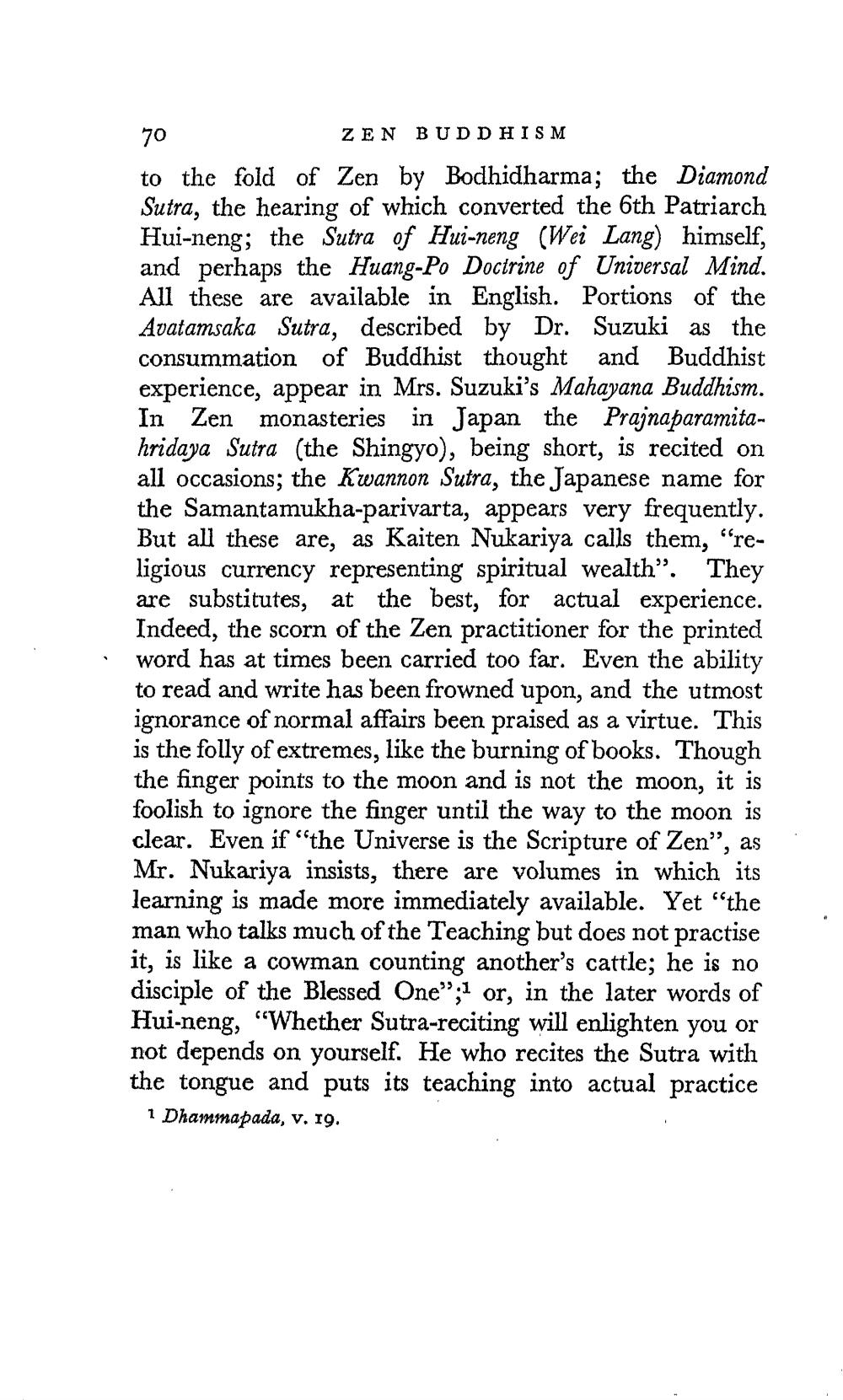________________
70
ZEN BUDDHISM to the fold of Zen by Bodhidharma; the Diamond Sutra, the hearing of which converted the 6th Patriarch Hui-neng; the Sutra of Hui-neng (Wei Lang) himself, and perhaps the Huang-Po Doctrine of Universal Mind. All these are available in English. Portions of the Avatamsaka Sutra, described by Dr. Suzuki as the consummation of Buddhist thought and Buddhist experience, appear in Mrs. Suzuki's Mahayana Buddhism. In Zen monasteries in Japan the Prajnaparamitahridaya Sutra (the Shingyo), being short, is recited on all occasions; the Kwannon Sutra, the Japanese name for the Samantamukha-parivarta, appears very frequently. But all these are, as Kaiten Nukariya calls them, "religious currency representing spiritual wealth”. They are substitutes, at the best, for actual experience. Indeed, the scorn of the Zen practitioner for the printed word has at times been carried too far. Even the ability to read and write has been frowned upon, and the utmost ignorance of normal affairs been praised as a virtue. This is the folly of extremes, like the burning of books. Though the finger points to the moon and is not the moon, it is foolish to ignore the finger until the way to the moon is clear. Even if the Universe is the Scripture of Zen”, as Mr. Nukariya insists, there are volumes in which its learning is made more immediately available. Yet "the man who talks much of the Teaching but does not practise it, is like a cowman counting another's cattle; he is no disciple of the Blessed One”;1 or, in the later words of Hui-neng, “Whether Sutra-reciting will enlighten you or not depends on yourself. He who recites the Sutra with the tongue and puts its teaching into actual practice 1 Dhammapada, v. 19.




